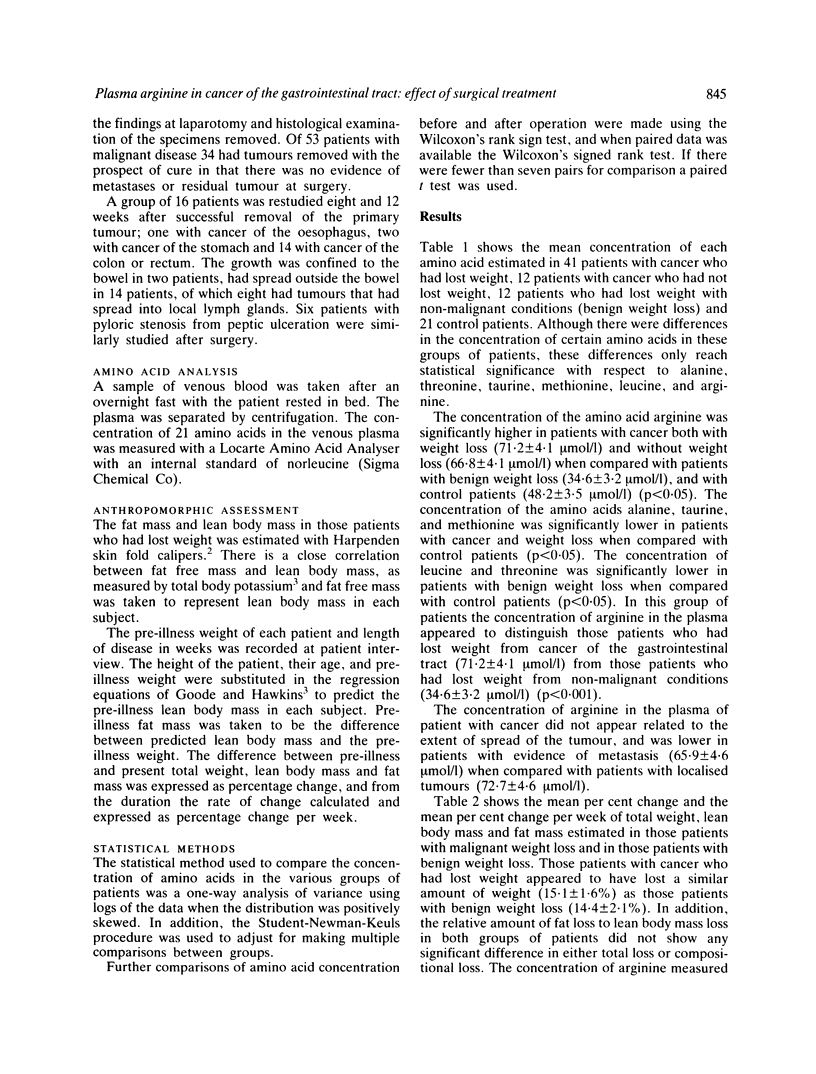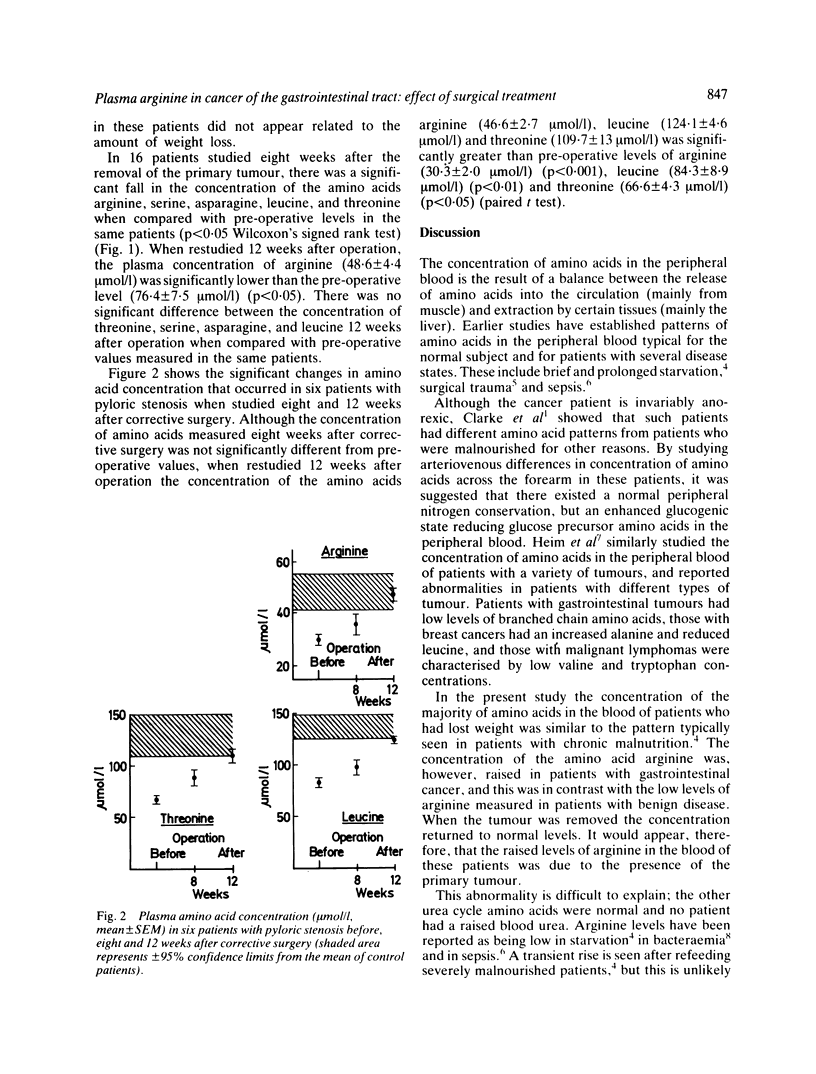Abstract
The concentration of 21 amino acids was measured in the venous plasma of 41 patients with cancer of the gastrointestinal tract who had lost weight, 12 patients who had lost a similar amount of weight from non-malignant, non-septic conditions (benign weight loss), 12 patients with cancer of the gastrointestinal tract who had not lost weight and 21 control patients. Sixteen patients with localised tumours were restudied eight and 12 weeks after successful removal of the primary growth. Six patients with pyloric stenosis (benign weight loss) were similarly studied for comparison after corrective surgery. The concentration of the amino acid arginine was significantly greater in patients with cancer both with weight loss (71.2 +/- 4.1 mumol/l mean +/- SEM) and without weight loss (66.8 +/- 4.1 mumol/l) when compared both with patients with benign weight loss (34.6 +/- 3.2 mumol/l) and with control patients (48.2 +/- 3.5 mumol/l) (p less than 0.05). In patients with cancer subjected to surgery the concentration of arginine (76.4 +/- 7.5 mumol/l) fell to normal levels eight weeks after operation and remained normal 12 weeks after surgery (48.6 +/- 4.4 mumol/l) (p less than 0.05). This was in contrast with the rise in plasma arginine in patients with pyloric stenosis after surgery, suggesting that the raised level of arginine was due to the presence of the primary tumour.
Full text
PDF




Selected References
These references are in PubMed. This may not be the complete list of references from this article.
- BACH S. J., SWAINE D. THE EFFECT OF ARGINASE ON THE RETARDATION OF TUMOUR GROWTH. Br J Cancer. 1965 Jun;19:379–386. doi: 10.1038/bjc.1965.45. [DOI] [PMC free article] [PubMed] [Google Scholar]
- Bhide S. V., D'Souza R. A. Biochemical characterization of human tumours. Indian J Exp Biol. 1977 Jun;15(6):483–485. [PubMed] [Google Scholar]
- Clarke E. F., Lewis A. M., Waterhouse C. Peripheral amino acid levels in patients with cancer. Cancer. 1978 Dec;42(6):2909–2913. doi: 10.1002/1097-0142(197812)42:6<2909::aid-cncr2820420654>3.0.co;2-#. [DOI] [PubMed] [Google Scholar]
- Currie G. A. Activated macrophages kill tumour cells by releasing arginase. Nature. 1978 Jun 29;273(5665):758–759. doi: 10.1038/273758a0. [DOI] [PubMed] [Google Scholar]
- Dahlig E. Rola argininy i arginazy w nowotworach. Postepy Hig Med Dosw. 1978 Jul-Aug;32(4):523–531. [PubMed] [Google Scholar]
- Dale G., Young G., Latner A. L., Goode A., Tweedle D., Johnston I. D. The effect of surgical operation on venous plasma free amino acids. Surgery. 1977 Mar;81(3):295–301. [PubMed] [Google Scholar]
- Freund H., Atamian S., Holroyde J., Fischer J. E. Plasma amino acids as predictors of the severity and outcome of sepsis. Ann Surg. 1979 Nov;190(5):571–576. doi: 10.1097/00000658-197911000-00003. [DOI] [PMC free article] [PubMed] [Google Scholar]
- Reznik S. R., Slabospitskaia A. T., Kachan A. F., Tofan A. V., V'iunitskaia V. A. Vliianie bakteriemii na soderzhanie svobodnogo arginina v syvorotke krovi pri zabolevaniiakh zheludochno-kishechnogo trakta. Mikrobiol Zh. 1979 Jul-Aug;41(4):378–381. [PubMed] [Google Scholar]
- Smith S. R., Pozefsky T., Chhetri M. K. Nitrogen and amino acid metabolism in adults with protein-calorie malnutrition. Metabolism. 1974 Jul;23(7):603–618. doi: 10.1016/s0026-0495(74)80020-x. [DOI] [PubMed] [Google Scholar]


